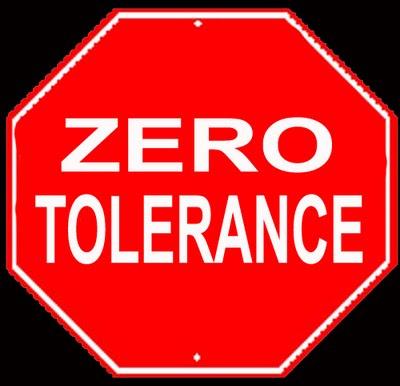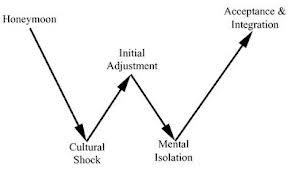Zero Sense: How Ahmed Mohamed and His Clock Shined A Light On Educational Authoritarianism
Sep 30,2015
Things are looking up for Irving, Texas resident Ahmed Mohamed. A little over a month ago, he was yet another precocious adolescent who alternatively charmed and annoyed his instructors, occasionally accomplishing the latter through the use of ingenious contraptions he cooked up on his own. Fast forward to today, and he has received invitations to Facebook headquarters, Google Science Fair, and the White House, in addition to earning praise from the venerable George Takei, Star Trek's very own Mr. Sulu, and the slightly-less venerable Hillary Clinton, Barack Obama's very own Dick Cheney. What catapulted this young inventor to fame? Just a small incident in which school administrators thought a digital clock he assembled on his own was a bomb and had him dragged out in handcuffs by police before suspending him for three days, even after an hour and a half of questioning (or for that matter, an hour and a half of the suspected "bomb" not going off) proved beyond a doubt that it really was a clock they were dealing with.
To account for the apparent discrepancy between the limited severity of the situation at hand and the overblown response to it, the Irving Police Department asserted that it never actually believed that he had a bomb: rather, Ahmed was apprehended for being in possession of what they believed was a "hoax bomb", the alleged purpose of which was to inspire as much panic and mayhem as possible. Having established that there never really was any danger, inquiring minds began to wonder if maybe a thinly-veiled Islamophobia was at work here. When confronted about this possibility, Irving Police Chief Larry Boyd flatly denied it, insisting that the department's reaction "would have been the same" regardless of the student's race or religious background, adding that, "We live in an age where you can't take things like that to school. Of course, we've seen across our country horrific things happen, so we have to err on the side of caution." While it might come as a surprise to many, the chief is right. Or rather, he's right about the first part of his statement.
In December, 2013, a 6-year-old boy was suspended from a Maryland school for what administrators described as threatening "to shoot a student". How did the child make this threat? By playfully pointing his finger like a gun and saying "pow". When asked by the boy's mother why he was being disciplined so harshly for such a trivial offense, the school staff mentioned the then-recent Sandy Hook shooting, prompting her baffled reaction of "What does Connecticut have to do with my child in Maryland?" An even more pertinent question might have been "What does a crazed gunman massacring innocent people have to do with a 6-year-old playing with classmates?" A month after this little travesty of justice, a Pennsylvania girl was interrogated by school administrators and subsequently suspended for 10 days after making a "terroristic threat" to shoot herself and a fellow student. The fearsome weapon she planned to accomplish this with, as it turned out, was a bright pink, bubble-shooting "Hello Kitty" gun. Luckily, nobody was hurt - aside from the girl, that is, who suffered from stomach aches and night terrors for weeks after the whole ordeal.
You don't even have to bring an object that peripherally resembles a weapon to school to incur the wrath of overzealous administrators: you can do as little as wear a shirt displaying guns on it and be disciplined for it, as Jared Marcum so painfully learned. An eighth-grader at Logan Middle School in West Virginia, Marcum made the mistake of thinking the First Amendment carried weight within the walls of school and wore an NRA t-shirt bearing a rifle and urging viewers to "Protect Your Right". Ironically, Marcum's rights would come under siege when one of his teachers ordered that he remove the shirt, a demand he refused to comply with on the grounds that he, like all Americans, was entitled to freedom of speech and expression. The ensuing events proved very telling about the current state of affairs in present-day America: for exercising his constitutionally-guaranteed rights, Marcum was hauled out of school by law enforcement agents and faced criminal charges that carried with them a year's worth of jail time and a $500 fine. It was only after a two-month long, surely-expensive legal battle that his parents were able to convince the prosecutor that giving someone a criminal record for using the freedom of speech we as a nation hold dear wasn't such a good idea. Out of respect for what remains of the reader’s sanity at this point, this writer will leave it to you to delve into the details of the fourth grader suspended for pretending to make a classmate disappear with a replica of the One Ring of Lord Of The Rings fame (shockingly, the administrators didn’t turn it over to Sauron).
If common sense were official policy in American schools, none of these incidents would ever happened. But common sense is not official policy. Zero tolerance, or the practice of deploying maximum punishment for certain offenses, is. Yes, a holdover from the anti-crime hysteria of the 80’s and 90’s remains the law in the halls of our schools, as any millennial will tell you. Following the lead of federal efforts to combat juvenile delinquency like the Gun Free School Zones Act of 1994, schools frantically implemented measures to meet the stringent requirements of such legislation, lest they lose federal funding for failing to live up to said requirements. While these policies were originally aimed at offenses involving firearms (and drugs shortly afterwards), mission creep, as is the case with many political and social courses of action done “for the children," inevitably set in and soon enough the children said policies were meant to protect were being expelled for bringing Alka-Seltzer and mouthwash to school. Whether the kid was a troublemaker or honors student, had malicious intent or not, didn’t enter the question: if you brought a bottle of Cherry 7-Up with a whisper of grain alcohol in it, you could kiss your Student Council membership, science fair awards, and spot on the cheerleading squad goodbye and say hello to a new school and boot camp. Some particularly brave schools, ever eager to test the waters, have even tried to extend their zero tolerance regimes well beyond their walls, with state and federal courts striking down several attempts to suspend students for mocking classmates and school staff on social media outside of the classroom.
Even so, this draconian style of discipline is not without it's defenders: supporters of zero tolerance policies maintain that they are necessary to not only punish serious offenses, but to also send a message that such behavior will not be tolerated, in the hope that other students will be deterred from engaging in the same behavior. The facts, however, tell a different story: according to a study by the Indiana Education Policy Center, there is "almost a complete lack of documentation linking zero tolerance with improved school safety," adding that, "The most extensive studies (Heaviside et al., 1998, Mayer & Leone, 1999) suggest a negative relationship between school safety measures and school safety." To be fair, the study was conducted in 2000, so additional research might have been done between since then that vindicates proponents of zero tolerance. Let's take a look at what the American Psychological Association found in it's study of zero tolerance policies, as summarized by Everyday Psychology: "It is assumed that the removal of disruptive students provides for a school climate more conducive to learning. In fact, the opposite is true. Schools in which expulsions and suspensions are common tend to have less satisfactory school climate ratings and are found to spend a disproportionate amount of time on disciplinary issues. And after taking into account the socioeconomic status of students, they tend to have lower academic achievement rates." What the APA is saying, effectively, is that zero tolerance is more trouble than it is worth, that the cure is worse than the illness.
Indeed, Ahmed Mohamed would have been just another, forgotten victim of this "cure" had people not rallied to his defense and condemned the school and police's handling of the situation. But sadly, too many students who face similarly excessive punishments slip through the cracks, remembered by few and mourned by even less. As Terri Burke, Executive Director of the Texas chapter of the American Civil Liberties Union, put it, "Ahmed suffered through a terrifying, traumatizing, and unjust ordeal. Yet because of the mass exposure of what he endured, he's received invitations to the White House, Facebook headquarters, and the Google science fair... For too many others -- the ones whose stories won't go viral -- the possibility of the American nightmare remains too real." The moment Ahmed was handcuffed for showing his clock to a teacher was when many Americans saw the zero tolerance nightmare for what it is. It's up to them to wake up and end it now.






